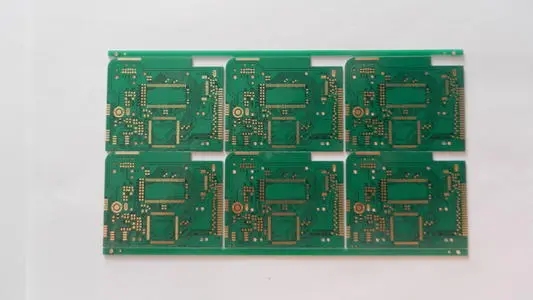Simulation is a test of a virtual prototype that takes all aspects into consideration. As the design becomes more and more complex, it is impossible for engineers to implement every scheme. At this time, they can only use advanced simulation instead of experiment to make judgments.

In today's system design, in addition to the challenges brought about by high-speed and high-density circuit boards, the pressure of rapid product launches makes simulation an indispensable means of system design. The designer hopes to use advanced simulation tools to find problems in the design stage, so as to complete the system design with high efficiency and high quality.
In traditional PCB board design, engineers rarely resort to simulation. More often, it uses the reference designs and design guidelines (ie white papers) provided by upstream chip manufacturers to design in combination with the actual experience of the engineers, and then the prototypes produced by the design are tested repeatedly to find out the problems and modify the design. This goes over and over again, until the problem is basically solved. Even if the simulation tool is used occasionally to design, it is only limited to the partial circuit. Modifying the circuit means a delay in time. This delay is unacceptable under the pressure of rapid product launches. Especially for large systems, a small modification may require the entire design to be overturned. The loss it brings to manufacturers is immeasurable.
Product quality is difficult to guarantee, the development cycle is uncontrollable, and the over-reliance on the experience of engineers... these factors make it difficult for the above design methods to cope with the challenges brought by the increasingly complex high-speed and high-density PCB design, so advanced simulation must be used. Tools to solve it. "The design schemes given by upstream chip manufacturers are based on their own prototypes, and the products of system manufacturers cannot be exactly the same as those of upstream manufacturers; at the same time, the design requirements of one chip may be contradictory to the other. It must be simulated to determine the design plan." Chen Lanbing said.
In a sense, simulation is to allow software to complete the functional evaluation that can only be completed by testing the physical prototype before on the virtual prototype. It is a more "soft" and more economical solution.
However, the simulation of high-speed and high-density circuit boards is different from traditional simulation. Mentor Graphics technical engineer Yulifu said: "Traditional simulation is done for schematics. It just adds incentives and looks at the output to determine whether the function is correct; while high-speed simulation is based on the premise that the function is correct, depending on the design. What’s the performance? It is not only for the schematic diagram, but also for the PCB design.” Using the simulation tool, you can judge which scheme is closer to the actual demand, and on the basis of meeting the performance requirements, judge which one has the lower cost. In the performance design and Find a balance between system costs. Yulifu said: "Using simulation tools, you can judge whether the direction of system improvement is correct, point out the direction for the design, increase the success rate of the first board, and make the product go to the market faster. However, no matter how close the simulation result is to the test result, it cannot Replace the actual test system."
Testing is a true judgment of system performance that includes all real environmental factors, but simulation is a "test" of virtual prototypes. It is aimed at certain specific conditions. There is no tool that can take all real conditions into consideration at the same time. simulation. However, with the development of technology and the continuous improvement of tools, the approximation of simulation results and actual test results is getting higher and higher, and the guiding significance for the design is also increasing, but at the same time, higher requirements are placed on engineers- -Although the tools are getting easier to use, the judgment and improvement methods of simulation results all depend on the engineer's technical level and theoretical foundation.
At present, in high-speed PCB simulation, the most unsatisfactory effect is EMC/EMI. This is because for high-speed systems, due to the influence of the via effect, three-dimensional modeling of the system is required to effectively simulate the real environment. However, for a large and complex system such as PCB board, it is very difficult to model it in three dimensions. According to Yulifu, at present, the method of expert inspection is mainly adopted, which converts EMC/EMI issues into layout and wiring rules on PCBs in accordance with international general standards. Cadence's EMControl is such a rule check tool similar to an expert system, and it also provides a customized interface to facilitate customers to write EMC/EMI check rules suitable for the company. Mentor Graphics' Quiet Expert can check the incorrect wiring structure that causes EMI problems, find out the problem, and give the cause of the EMI problem and suggested solutions.
In addition, in terms of three-dimensional analysis, companies such as Ansoft and Apsim can provide specialized tools and methods, and these tools can be used in conjunction with Cadence and Mentor Graphics system tools.